Don't wanna be here? Send us removal request.
Photo
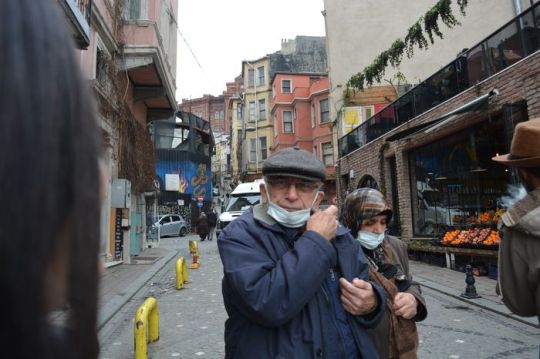
Religious Communities (Millets) in Turkey
In Turkey, everyone is expected to belong to a religious group, also called a millet. Each person must be registered under one of these communities, no matter how rich or poor they are. There are many millets in Turkey. Some of the main ones are:
Roman Catholic, Greek Orthodox, Armenian, Jewish, Protestant, Bulgarian, Maronite, Nestorian, Greek Roman Catholic
Each millet has its own religious leaders. In theory, these leaders are responsible for their community’s religion, schools, hospitals, monasteries, and charitable services. They are also supposed to have some legal authority in matters related to their community.
Religious Freedom in Theory, But Not Always in Practice
In theory, every millet is allowed to practice its religion freely. Members also have the right to appeal to their religious leader for help if they are in trouble with the law. On paper, the leader of the millet is the official link between the Turkish government and the members of that community.
But in real life, these rights are often ignored. If someone is accused of a crime, the Turkish police often arrest them immediately. Many times, the person is thrown in jail without a fair trial, and they may not get any help from their millet leader. Most of the time, the only way out of prison is if their family pays money or a foreign diplomat steps in to protect them.
How Embassy Courts Work in Turkey
Foreign citizens in Turkey are usually tried in embassy courts that follow the laws of their home country, not Turkish law. These courts do not follow Turkish procedures. Everything is done just as it would be done back home Guided Tour Ephesus.
For example, in the United States embassy court, there are legal staff just like in the U.S., such as:
A clerk of court, A U.S. marshal, Judges and other legal officers, There is even a U.S. prison to hold people accused of breaking American laws while in Turkey.
Not All Countries Have the Same Level of Activity
The United States court in Turkey does not have much work to do because there are only about 200 Americans living there. Most of them are missionaries, and they rarely get involved in legal problems.
But the situation is different for other countries. The Russian, German, Austrian, and French embassies handle many more legal cases because they have more citizens living in Turkey.
0 notes
Photo

Understanding the Construction of the Octagon
A Window into Politics and Society of Ancient Pergamon
The construction of the Octagon in ancient Pergamon offers a valuable opportunity to explore the political, social, and economic environment of the time. By looking at how and where it was built, we can better understand the priorities and abilities of the society that created it.
The first step in this investigation is a thorough study of the construction site. Several key aspects need to be considered:
Location and Topography
Researchers need to examine why this site was chosen. Was it close to resources such as stone, water, or roads? Did the topography—meaning the shape and slope of the land—support easy construction and transportation?
Construction Challenges and Techniques
The builders of the Octagon may have faced serious structural challenges. To overcome these, they likely used innovative building methods. Understanding these techniques helps us learn about the engineering knowledge of the time Sofia City Tour.
Workforce and Time Estimations
How many workers were needed? How long would construction have taken? Estimating this helps us measure the scale of the project and its economic impact.
The goal of this research is not to provide final answers from limited data, but rather to start a discussion. It encourages new ways of thinking about the organization of ancient construction, while connecting to the broader topics of this academic network.
Bound by Binders
Lime Production and Its Role in Late Roman Industry
By Elizabeth Murphy & Riley Snyder, Florida State University
In the Late Roman period (4th to 7th centuries AD), lime was an important material used in many different ways. It was not only essential for construction, especially in making mortar, but also used in medicine, tanning leather, textile processing, funerals, and even farming as a fertilizer.
Because of its many uses, lime kilns and slaking pits (where lime was cooled with water) are commonly found in archaeological sites from this era. These facilities appear in both cities and countryside, and were used by both public institutions and private businesses.
This research focuses on Asia Minor, where many lime production sites have been found. The paper takes a close look at how lime mortar was made and how this process—known as a chaine opératoire (a step-by-step production sequence)—connected different industries.
For example
Builders needed lime for construction.
Farmers used it for soil treatment.
Tanners used lime in processing hides.
Textile workers needed it for cleaning cloth.
This means lime production was not a stand-alone process. It was part of a larger network of industries, all depending on each other. These interconnected systems show how advanced and efficient economic organization was in the Late Roman world.
0 notes
Photo
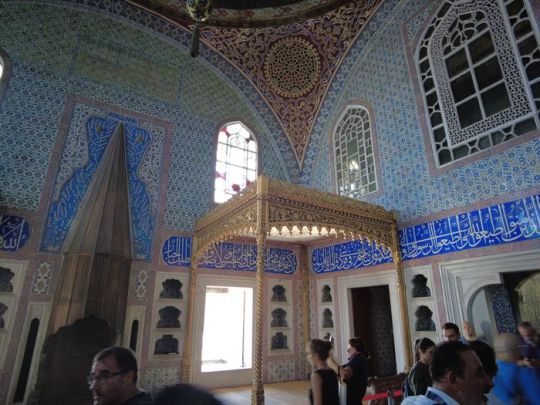
Felix Kanitz’s Journey Through Bulgaria
In 1860, Felix Kanitz first came to Bulgaria. A few years later, the country became the main focus of his travels and scientific work. He studied Bulgaria in many ways—archaeologically, historically, geographically, ethnographically, and cartographically. In simple terms, Kanitz explored the country’s past, culture, people, and land.
Sharing the Bulgarian Story with the West
Along with his research, Kanitz wrote many articles for the Western audience. He shared truthful and detailed information about the life of the Bulgarian people, especially during their struggle for national liberation from the Ottoman Empire. His writings helped the rest of Europe learn about Bulgaria’s culture and hopes for freedom Coastal Bulgaria Holidays.
Many Visits and Difficult Travels
Between 1862 and 1874, Kanitz traveled to Bulgaria several times. He crossed the Balkan Mountains 18 times—an impressive achievement, especially considering the hard conditions and lack of modern transport. Despite these challenges, he continued his deep studies and research.
During these travels, he collected information for his most famous work, “Danube Bulgaria and the Balkans”, which was published in 1878 in Leipzig. This book was beautifully illustrated by Kanitz himself and received a lot of attention both in Bulgaria and abroad. The book is still considered one of the most valuable historical and ethnographic studies about 19th-century Bulgaria.
Recognition and Respect
Kanitz’s book showed the creativity, strength, and potential of the Bulgarian people. He believed that they had a bright future ahead. His studies were based on real evidence and observations, which helped many Europeans understand and respect Bulgaria.
Kanitz also created one of the most accurate maps of Bulgaria at that time. This map included all ethnic Bulgarian areas—Moesia, Thrace, and Macedonia—which made it very important and respected among scholars.
A True Friend of Bulgaria
Felix Kanitz supported the Bulgarian national movement and remained a loyal friend of the country even after its liberation from Ottoman rule in 1878. He continued to follow Bulgaria’s development until his death on December 22, 1903.
An Artist as Well as a Scientist
Besides being a scientist, Kanitz was a skilled artist and engraver. He made many pencil sketches and watercolor paintings (called “wateredors”) that showed the natural beauty of Bulgarian cities, mountains, rivers, and villages. These images give us a real sense of what Bulgaria looked like in the 19th century.
His Legacy Lives On
Years later, Kanitz’s nephew, Jacques Kanitz, donated many of his uncle’s original drawings and archives to the Bulgarian Academy of Sciences. Thanks to this donation, many of Felix Kanitz’s artworks have been shared with the Bulgarian public and continue to be admired to this day.
0 notes
Photo

Moving Beyond Blame
Some time ago, people criticized Bulgaria and questioned her reputation. However, it’s the job of history—not politics—to decide who was truly at fault. Right now, Bulgaria must focus on the present, not the past. There are more urgent and serious issues that need attention.
The Future of the Slavic People
The Slavic nations are at a turning point. The outcome of the great war (World War I) will decide whether they are freed or face worse oppression. Russia, the traditional protector of the Slavs, is now fighting alongside England and France, who have always supported freedom and independence in Europe.
The Allies and Their Mission
The goal of Russia, England, and France is to defeat German militarism, which threatens the peace and independence of small nations all across Europe. If the Allies succeed in breaking this dangerous power, then all Slavic countries, including Bulgaria, will gain—both in territory and in freedom Guided Tours Turkey.
The Risk of Defeat
But if the Allies fail or only partially succeed, then all Slavic nations will suffer—especially Bulgaria. The old enemy of the Slavs, the Ottoman Turks, have joined forces with Germany and Austria in the Pan-Germanic League. If these powers win, the Turks might return to Europe and take back the lands they once controlled—lands they ruled with cruelty and violence for centuries.
Bulgaria’s Difficult Position
Bulgaria may still feel bitter toward its former allies from the First Balkan War. It might even want to see them suffer. But this war is bigger than past rivalries. If Serbia falls, Bulgaria and all Slavic nations are in danger. This is no longer about one country—it’s about the survival of the entire Slavic people.
0 notes
Photo

Nationalization of Private Businesses in Bulgaria
The Beginning of Nationalization
On 18 December 1947, the Politburo of the Central Committee of the Bulgarian Communist Party approved a draft bill to nationalize all private industrial and mining enterprises. Just five days later, on 23 December 1947, the Grand National Assembly officially passed the bill, making it law.
This law marked the beginning of one of the most dramatic economic transformations in Bulgarian history. It allowed the state to take ownership of businesses in key industries such as:
Metalworking
Mining
Textiles
Construction
Chemicals
Food production, including breweries, dairies, and vegetable oil factories
The law also gave the government control over the financial resources of these businesses, including bank deposits, accounts, and all assets Istanbul Tours Guide.
Secret Preparation and Swift Action Even before the bill was officially passed, preparations were underway in complete secrecy. On 22 December 1947, one day before the law was approved, communist officials began confiscating private businesses.
The process was simple and intimidating. Business owners were suddenly visited by representatives of the Communist Party. These officials demanded:
The keys to the business owner’s office and safe
A signed statement handing over the business to the “people’s government”
After signing, the owner was told to collect his coat and leave. That was the end of his role in the company he had likely spent his life building.
Immediately afterward, factory loudspeakers announced to workers that the Communist Party and state authorities had officially taken over the business. This public declaration was meant to show that the government was now fully in charge.
Loss of Property and Personal Freedom
Nationalization didn’t just affect the businesses. It also took a heavy toll on the lives of business owners. In addition to losing their companies, many had their personal property taken away, including:
Homes
Jewelry
Cars
Bank accounts
They were removed from all leadership roles and positions of influence in industry, banking, and trade. Many families were left with nothing, as both their professional careers and private lives were destroyed.
The Goal of Nationalization
The official reason for nationalization was to create a “people’s economy”—one where all means of production belonged to the state and served the interests of the working class. The Communist Party claimed that this was a necessary step to move from a capitalist to a socialist economy.
However, for many people, it meant the end of personal freedom, the destruction of private enterprise, and the beginning of a life under constant government control and surveillance.
The nationalization law of December 1947 was a turning point for Bulgaria. It wiped out private ownership in key sectors overnight and changed the country’s economic structure completely. While the Communist Party celebrated it as progress, for thousands of business owners and their families, it was the beginning of hardship, loss, and a new life without the rights they once had.
0 notes
Photo
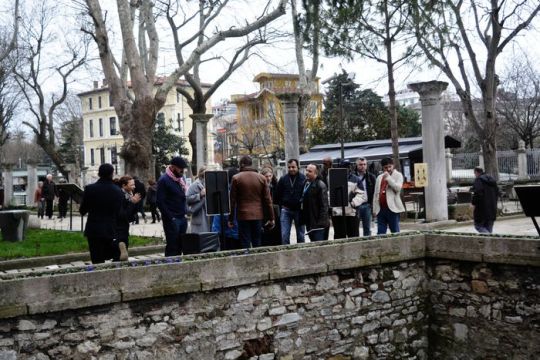
The Role of Women's Organizations in the Suffrage Movement
The two main organizations pushing for women’s right to vote were the Union Ravnopravie (a more left-wing group) and the Bulgarian Women’s Union. These groups became the driving force behind the suffrage movement in Bulgaria.
Laws vs. Traditions: Why Women’s Suffrage Took Time
Even though Bulgarian women were not specifically banned from voting by the country’s constitution and electoral laws, patriarchal customs and traditions treated only men as citizens. While all men, including minority groups, were allowed to vote, women were still excluded because of traditional views about their role in society. Changing traditions was harder than changing laws Holidays Bulgaria.
Women’s Vote Granted in 1937
The demand for women’s suffrage remained unresolved for a long time. It wasn’t until 1937 that women were given the right to vote, but only for local elections and only for married women. Later, women who were married, divorced, or widowed were allowed to vote in parliamentary elections, but single adult women were still excluded. Because of the traditional pattern of early marriage in Bulgaria, most women were able to vote. However, the key issue was that women’s political rights were tied to their relationships with men, not their individual status.
Dependence on Men for Voting Rights
The new law made women voters, but only as long as they were linked to a man (either their husband, former husband, or deceased husband). This meant women were not seen as individual citizens but as dependents of men. Family life was seen as proof of whether a woman could be trusted with political rights. Additionally, the new law gave women the right to vote, but not to stand for election (so they had only active voting rights).
The Situation in Bulgaria Compared to Other Countries
The situation for women’s suffrage in Bulgaria was similar to that in countries like France and Switzerland, where men had the right to vote earlier. In Germany and Britain, both men and women faced barriers to voting, but once universal male suffrage was granted, women were quickly given the right to vote as well.
0 notes
Photo

Preparing for Prayer
The Turkish soldier was getting ready for prayer. He took off his boots and stood clean and barefoot. He faced Mecca, placed his hands together, and began to pray. He knelt, prayed again, and then lowered his forehead to the ground, praying a third time. When he finished, he folded his small prayer rug and tucked it into his jacket. It was a peaceful and impressive sight, seeing this soldier take a quiet moment during the midday break to perform the devotions of a true Muslim.
Getting Ready to Continue the Journey
A command was given, and the soldiers quickly got up, slinging their rifles over their shoulders and hopping back onto their horses. We moved on, leaving the shaded trees behind. As we rode, we could see the sunlit landscape ahead. The hills were pleasant, and soon we were riding among them at a steady pace Customized Daily Istanbul Tours.
Challenging Terrain Ahead
However, that pace couldn’t last long. The path soon became steep and rocky, making it impossible for the horses to continue. We dismounted and began walking. The hillside was full of loose rocks and many streams. It felt like walking through a muddy coal mine. We hopped from one rock to another, pausing occasionally to wait for the slower horses to catch up.
Approaching Ochrida
Soon, Ochrida came into view. It was a small town perched on a rock by the large Ochrida Lake. Behind it was a beautiful flat valley, perfectly cultivated—everything seemed to be growing in abundance, like a carpet of fertility.
Arriving in the City
We decided to push ahead of the other travelers from Monastir, as they had their own guard and we weren’t sure when they would catch up. So, we rode on towards the city, organizing ourselves in a respectful manner. Two soldiers with rifles rode ahead, followed by the captain, my guide, and me, with the rest of the soldiers riding in pairs behind us. As we galloped into town, the people came out to watch. Mothers, fearing for their children, rushed in panic, worried that the horses might hurt their little ones. But fortunately, no children were harmed.
0 notes
Photo
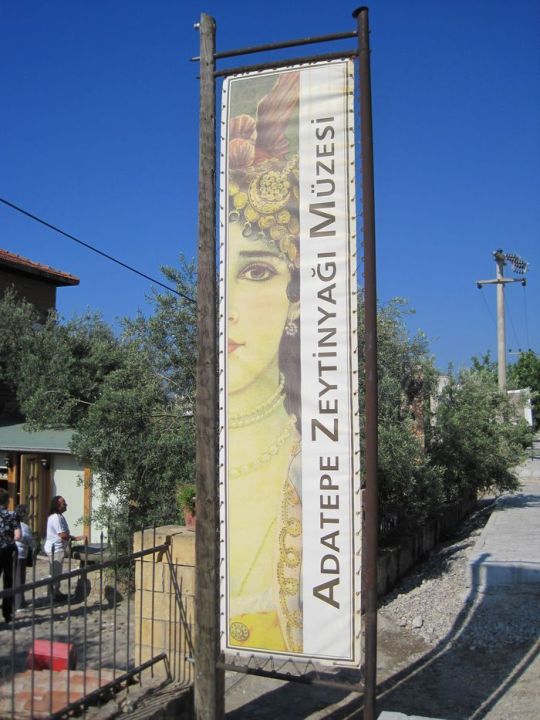
An Unexpected Situation
There were moments when I was shocked, but I tried to act as dignified as possible. However, inside, I wanted to laugh uncontrollably. Around me was a circle of people with dark faces, all wearing red fezzes. The band played loudly, playing “God Save the King.” The Governor stood in a special area, surrounded by red ropes, on a blue carpet. In the center were two fancy red and gold chairs that looked like stage props.
A Royal Reception
We exchanged greetings in a formal way, bowing to each other repeatedly. When “God Save the King” finished, I was politely invited to sit in the crimson and gold chair next to the Governor. At that moment, I felt like I was the official representative of Great Britain. In fact, I almost felt like I was the Viceroy or a representative of the King himself. But at the same time, I felt like an imposter. I wanted to stand up, explain that I was just a curious traveler! Later, my dragoman told me that the audience thought I was a member of King Edward’s personal staff! That was quite embarrassing. Still, I kept a serious face. If I ever meet His Majesty, I’ll tell him that the most uncomfortable half hour of my life was when I unknowingly became the representative of Great Britain at a circus in Kirk Kilise Dragalevtsi Monastery.
The Circus Performance
There were cigarettes to smoke and coffee to drink. An older woman in blue tights jumped through hoops. A trapeze artist performed, and a clown entertained the crowd. The audience, mostly men wearing fezzes and a few dark-eyed Greek women, seemed to watch in a very calm way, almost as if they weren’t fully enjoying themselves.
The Governor’s Busy Work
Throughout the performance, the Governor was still working. He frowned and looked serious. A soldier quickly brought him a telegram form, and he wrote a message. Officers stood behind him, and with just a small signal, one of them would step forward to attend to him. The Governor’s secretary, a small, tired-looking man, came in, bowed, and handed him more telegrams. By the end of the evening, I must have seen at least a dozen telegrams delivered.
The People’s Respect
The people of Kirk Kilise watched the Governor closely. They seemed impressed as he sat in his fancy chair, deep in thought, tapping his pencil on his knee. They appeared in awe of him.
0 notes
Photo
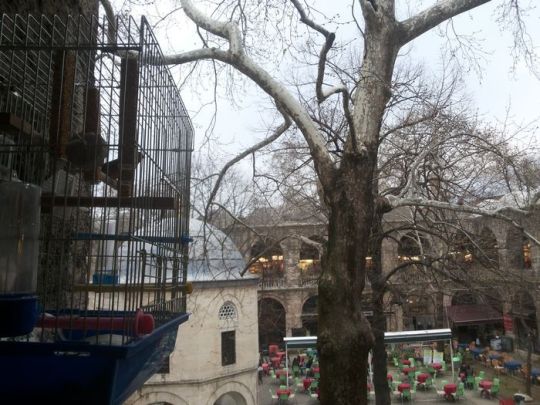
Understanding the Bulgarian Character
The Bulgarian is a complex individual, and to truly understand him, you must look beyond his surface appearance. He often comes across as serious, even gloomy, with a lack of visible refinement. His behavior can seem unkempt, and he tends to be direct in his manner, rarely using polite expressions like “thank you.” He dislikes the idea of being subordinate to others, so to avoid any hint of this, he might seem rude at times. He is often seen as stubborn and not easily moved by emotions or grand speeches. In business, he may appear slow, but he is a dedicated and hardworking person. He is particularly known for his skill in agriculture, making him one of the best farmers in the world. The Bulgarian may not be quick to express emotions, but he loves his country in a steady and determined way. Though he might not move fast, he is always moving forward. This consistent, determined nature is why Bulgaria has made steady progress since gaining its independence.
A History of Change and Conflict
The history of Bulgaria is full of change, much like a kaleidoscope, with different peoples and cultures influencing the country over time. The Romans were the first to make it a province, and after them, the Goths and Huns swept through the region. Many different tribes invaded Bulgaria, often fighting and killing each other. The main tribe that ruled the area was the Bulgari tribe, originally from the Volga region with a mixture of Asiatic ancestry. This tribe later mixed with the Slavs, and the Bulgarian people are more Slav than they realize, though they may not be aware of it Adventure Bulgaria Tour.
The Bulgarian language originally belonged to the Slavic group and still retains many Slavic elements today. However, over time, influences from other groups, such as the Vlach and Russians, changed it. While modern Bulgarian is a Slavic language, it has been affected by outside influences, much like how the English language absorbed words from other cultures. Despite these changes, Bulgarian remains a language with a solid identity.
The Struggle for Independence
The Bulgarians’ history also involves a series of struggles for independence. In the 12th century, the various Bulgarian tribes united and threw off Byzantine rule, only to later fall under the control of the Serbian empire. Eventually, both Bulgaria and Serbia were conquered by the Ottoman Turks, and for nearly 500 years, the country remained under Turkish control.
However, in the late 19th century, Russia, interested in controlling access to the Bosphorus, became the liberator of Bulgaria. After significant battles, including the Siege of Plevna and the defense of Shipka Pass, Russia helped free Bulgaria from Ottoman rule. The Treaty of Berlin in 1878 officially recognized Bulgaria as an autonomous and tributary principality, though it still remained under the nominal control of the Sultan.
Through centuries of foreign rule, conflict, and change, the Bulgarian people have developed a unique identity characterized by resilience, hard work, and a deep, quiet love for their homeland. Despite facing many challenges, they have shown steady progress, and today, Bulgaria continues to move forward, driven by the same determination that has always defined the Bulgarian spirit.
0 notes
Photo

The Struggle Against "Hooligans" in Bulgaria
New Decisions by the Politburo
On January 21, 1958, the Politburo of the Central Committee of the Bulgarian Communist Party made a significant decision to intensify the fight against so-called “hooligans” and “profligate looters.” This decision involved interning these individuals in labour camps. The term “hooligans” referred not only to those committing minor offenses but also included young boys and girls who expressed their individuality through Western fashion, hairstyles, and music. This crackdown targeted anyone who listened to or performed Western music and those who tuned into Western radio stations.
The Reality of Labour Camps
Peter Gogov, the chief of the Lovech labour camp, later revealed during an interrogation after the fall of the communist regime in 1989 that between 1945 and 1962, approximately 44 labour camps operated in Bulgaria. However, other sources, including books and personal memoirs, suggest that the actual number of labour camps was much higher—around 83. These camps varied in location and operated for different lengths of time during the period from 1944 to 1962 Bulgaria Private Tours Kazanlak.
Life in the Camps
The labour camps in Bulgaria were notorious for their harsh conditions. Inmates faced forced labor, poor living standards, and a lack of basic necessities. Many were subjected to severe punishment for minor offenses or for simply expressing views that contradicted the communist ideology. The camps served as a means of control and repression, silencing dissent and instilling fear in the population.
The government’s definition of “hooliganism” was broad and often arbitrary, allowing for the imprisonment of anyone who did not conform to the strict societal norms imposed by the regime. Young people, in particular, found themselves targeted for expressing themselves through music, fashion, or any form of Western influence. This reflected the government’s anxiety about Western culture and its potential to undermine communist ideals.
Impact on Society
The decision to intern “hooligans” in labour camps had a profound impact on Bulgarian society. Families were torn apart as young people were sent to these camps for expressing themselves. The stigma attached to being labeled a “hooligan” often lasted a lifetime, affecting job opportunities and social standing even after release.
The experience of living in a labour camp left lasting scars on many individuals. Survivors often faced psychological trauma and struggled to reintegrate into society. The repression of youth culture during this period also stifled creativity and expression, creating a climate of fear and conformity.
The crackdown on “hooligans” in Bulgaria during the late 1950s illustrates the lengths to which the communist regime went to maintain control over its citizens. By interning individuals for their personal choices, the government sought to suppress any potential dissent. Understanding this dark chapter in Bulgarian history is essential for recognizing the importance of freedom of expression and the consequences of authoritarianism.
0 notes
Photo

The Struggle Against "Hooligans" in Bulgaria
New Decisions by the Politburo
On January 21, 1958, the Politburo of the Central Committee of the Bulgarian Communist Party made a significant decision to intensify the fight against so-called “hooligans” and “profligate looters.” This decision involved interning these individuals in labour camps. The term “hooligans” referred not only to those committing minor offenses but also included young boys and girls who expressed their individuality through Western fashion, hairstyles, and music. This crackdown targeted anyone who listened to or performed Western music and those who tuned into Western radio stations.
The Reality of Labour Camps
Peter Gogov, the chief of the Lovech labour camp, later revealed during an interrogation after the fall of the communist regime in 1989 that between 1945 and 1962, approximately 44 labour camps operated in Bulgaria. However, other sources, including books and personal memoirs, suggest that the actual number of labour camps was much higher—around 83. These camps varied in location and operated for different lengths of time during the period from 1944 to 1962 Bulgaria Private Tours Kazanlak.
Life in the Camps
The labour camps in Bulgaria were notorious for their harsh conditions. Inmates faced forced labor, poor living standards, and a lack of basic necessities. Many were subjected to severe punishment for minor offenses or for simply expressing views that contradicted the communist ideology. The camps served as a means of control and repression, silencing dissent and instilling fear in the population.
The government’s definition of “hooliganism” was broad and often arbitrary, allowing for the imprisonment of anyone who did not conform to the strict societal norms imposed by the regime. Young people, in particular, found themselves targeted for expressing themselves through music, fashion, or any form of Western influence. This reflected the government’s anxiety about Western culture and its potential to undermine communist ideals.
Impact on Society
The decision to intern “hooligans” in labour camps had a profound impact on Bulgarian society. Families were torn apart as young people were sent to these camps for expressing themselves. The stigma attached to being labeled a “hooligan” often lasted a lifetime, affecting job opportunities and social standing even after release.
The experience of living in a labour camp left lasting scars on many individuals. Survivors often faced psychological trauma and struggled to reintegrate into society. The repression of youth culture during this period also stifled creativity and expression, creating a climate of fear and conformity.
The crackdown on “hooligans” in Bulgaria during the late 1950s illustrates the lengths to which the communist regime went to maintain control over its citizens. By interning individuals for their personal choices, the government sought to suppress any potential dissent. Understanding this dark chapter in Bulgarian history is essential for recognizing the importance of freedom of expression and the consequences of authoritarianism.
0 notes
Photo
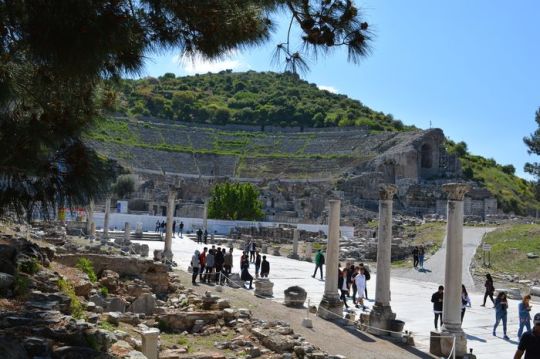
Acknowledging European Solidarity and Support
We deeply appreciate the support provided by the Konrad Adenauer Foundation and the Federal Foundation for Research on the Nature of the SED Dictatorship for this important project. Additionally, the active participation of the Berlin Library in Commemoration of the Victims of Communism stands as a significant symbol of European solidarity. Together, these contributions highlight our shared commitment to remembering the past and learning from it.
The Fall of the Berlin Wall: A Symbol of Hope
The fall of the Berlin Wall was more than just the collapse of a physical barrier; it symbolized the downfall of communist regimes across Europe. This monumental event inspired millions of people in Eastern and Central Europe, fueling their desire for a fresh start and a brighter future. The Federal Republic of Germany serves as an exemplary model from which we can learn valuable lessons. It has shown us how to work steadily and unwaveringly towards the unity and stability of a democratic society. By revealing the truth about the past and exposing the true nature of totalitarian regimes, Germany demonstrates that a strong and united future can be built on the foundation of honesty and transparency Guided Tour Istanbul.
Spreading the Message of the Exhibition
I sincerely hope that the powerful message of this exhibition reaches a wide audience across many towns and regions, touching both young and old. I am eager to contribute to this cause and help promote the establishment of a museum in the near future, dedicated to the memory of the victims of the communist regime in our country. Such a museum will serve as a crucial educational resource, helping the youth of Bulgaria, both present and future, to understand the realities of the totalitarian state, its institutions, and its State Security apparatus. It is vital that they learn how these entities functioned and the impact of their decisions on the lives of ordinary people.
Supporting the Cause and Addressing the Youth
I stand with you today to offer my full support for this worthy cause. It is our duty and responsibility to reach out to the young people of Bulgaria, ensuring that they can face the future without any distortion or concealment of the truth about our past. A nation can only have a meaningful future if it respects and understands its history. We must encourage the youth of Bulgaria to avoid being swayed by what is shallow, superficial, or merely convenient. Instead, they should strive to comprehend and address the challenges of today, using the lessons of the past to build a better future.
Building a Future on Truth and Knowledge
In conclusion, this initiative is not just about remembering the past; it is about empowering the future. By understanding the hardships and injustices of the totalitarian regime, the young people of Bulgaria can create a society that values truth, justice, and freedom. Let us work together to ensure that the lessons of history are never forgotten, and that they guide us in building a stronger, more united Bulgaria for generations to come.
0 notes
Photo
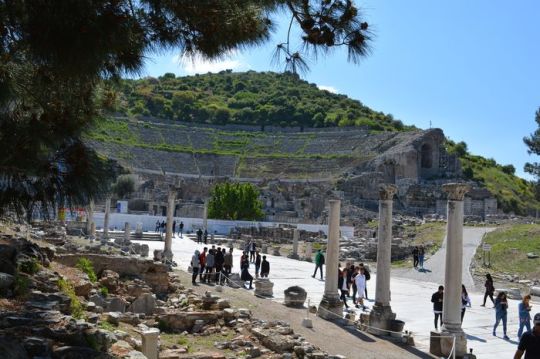
Acknowledging European Solidarity and Support
We deeply appreciate the support provided by the Konrad Adenauer Foundation and the Federal Foundation for Research on the Nature of the SED Dictatorship for this important project. Additionally, the active participation of the Berlin Library in Commemoration of the Victims of Communism stands as a significant symbol of European solidarity. Together, these contributions highlight our shared commitment to remembering the past and learning from it.
The Fall of the Berlin Wall: A Symbol of Hope
The fall of the Berlin Wall was more than just the collapse of a physical barrier; it symbolized the downfall of communist regimes across Europe. This monumental event inspired millions of people in Eastern and Central Europe, fueling their desire for a fresh start and a brighter future. The Federal Republic of Germany serves as an exemplary model from which we can learn valuable lessons. It has shown us how to work steadily and unwaveringly towards the unity and stability of a democratic society. By revealing the truth about the past and exposing the true nature of totalitarian regimes, Germany demonstrates that a strong and united future can be built on the foundation of honesty and transparency Guided Tour Istanbul.
Spreading the Message of the Exhibition
I sincerely hope that the powerful message of this exhibition reaches a wide audience across many towns and regions, touching both young and old. I am eager to contribute to this cause and help promote the establishment of a museum in the near future, dedicated to the memory of the victims of the communist regime in our country. Such a museum will serve as a crucial educational resource, helping the youth of Bulgaria, both present and future, to understand the realities of the totalitarian state, its institutions, and its State Security apparatus. It is vital that they learn how these entities functioned and the impact of their decisions on the lives of ordinary people.
Supporting the Cause and Addressing the Youth
I stand with you today to offer my full support for this worthy cause. It is our duty and responsibility to reach out to the young people of Bulgaria, ensuring that they can face the future without any distortion or concealment of the truth about our past. A nation can only have a meaningful future if it respects and understands its history. We must encourage the youth of Bulgaria to avoid being swayed by what is shallow, superficial, or merely convenient. Instead, they should strive to comprehend and address the challenges of today, using the lessons of the past to build a better future.
Building a Future on Truth and Knowledge
In conclusion, this initiative is not just about remembering the past; it is about empowering the future. By understanding the hardships and injustices of the totalitarian regime, the young people of Bulgaria can create a society that values truth, justice, and freedom. Let us work together to ensure that the lessons of history are never forgotten, and that they guide us in building a stronger, more united Bulgaria for generations to come.
0 notes
Photo
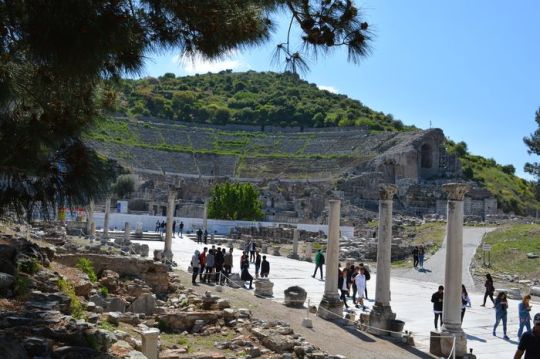
Acknowledging European Solidarity and Support
We deeply appreciate the support provided by the Konrad Adenauer Foundation and the Federal Foundation for Research on the Nature of the SED Dictatorship for this important project. Additionally, the active participation of the Berlin Library in Commemoration of the Victims of Communism stands as a significant symbol of European solidarity. Together, these contributions highlight our shared commitment to remembering the past and learning from it.
The Fall of the Berlin Wall: A Symbol of Hope
The fall of the Berlin Wall was more than just the collapse of a physical barrier; it symbolized the downfall of communist regimes across Europe. This monumental event inspired millions of people in Eastern and Central Europe, fueling their desire for a fresh start and a brighter future. The Federal Republic of Germany serves as an exemplary model from which we can learn valuable lessons. It has shown us how to work steadily and unwaveringly towards the unity and stability of a democratic society. By revealing the truth about the past and exposing the true nature of totalitarian regimes, Germany demonstrates that a strong and united future can be built on the foundation of honesty and transparency Guided Tour Istanbul.
Spreading the Message of the Exhibition
I sincerely hope that the powerful message of this exhibition reaches a wide audience across many towns and regions, touching both young and old. I am eager to contribute to this cause and help promote the establishment of a museum in the near future, dedicated to the memory of the victims of the communist regime in our country. Such a museum will serve as a crucial educational resource, helping the youth of Bulgaria, both present and future, to understand the realities of the totalitarian state, its institutions, and its State Security apparatus. It is vital that they learn how these entities functioned and the impact of their decisions on the lives of ordinary people.
Supporting the Cause and Addressing the Youth
I stand with you today to offer my full support for this worthy cause. It is our duty and responsibility to reach out to the young people of Bulgaria, ensuring that they can face the future without any distortion or concealment of the truth about our past. A nation can only have a meaningful future if it respects and understands its history. We must encourage the youth of Bulgaria to avoid being swayed by what is shallow, superficial, or merely convenient. Instead, they should strive to comprehend and address the challenges of today, using the lessons of the past to build a better future.
Building a Future on Truth and Knowledge
In conclusion, this initiative is not just about remembering the past; it is about empowering the future. By understanding the hardships and injustices of the totalitarian regime, the young people of Bulgaria can create a society that values truth, justice, and freedom. Let us work together to ensure that the lessons of history are never forgotten, and that they guide us in building a stronger, more united Bulgaria for generations to come.
0 notes
Photo
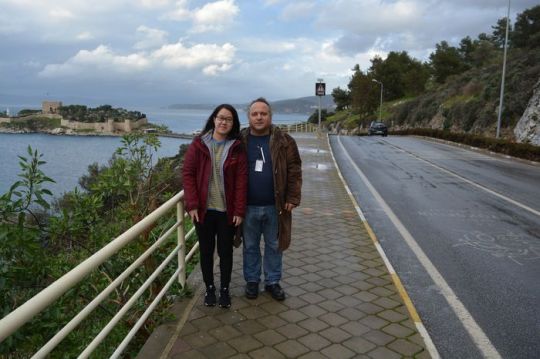
The Complex Conflict in the Balkans
Christian-on-Christian Violence
Many English Christians might not realize that most of the current violence in the Balkans involves Christians fighting other Christians. Various Christian “bands” roam the region, terrorizing villages and forcing them to switch from the Greek Church to the Bulgarian Church or vice versa, often using brutal force. Turkish soldiers occasionally pursue these bands and swiftly deal with them when caught, resulting in more killings.
Deep-Rooted Hatreds
The situation in the Balkans has changed over time. While Christians still harbor hatred towards the Turks, they now hate each other even more. During a visit to a village near Koritza, close to the border of Macedonia and Albania, I asked an innkeeper about his allegiance. He replied, “I find it best to be a Greek,” because a Greek band was active in the nearby hills. This highlights the fear and pragmatic decisions villagers make based on which band is currently in power.
The Real Problem
The real issue for those who care about the Balkan people is not just addressing Turkish incompetence but finding a way to stop the civil war raging between rival Christian churches. The atrocities committed by these church factions against each other are as terrible and inhuman as any perpetrated by the Turks. Meanwhile, the Turks watch and laugh, seeing no need to kill Christians when they are so intent on killing each other Tours Bulgaria.
A Confused Kettle of Fish
The Balkans is a confusing and tangled situation. The average person knows it’s too complex to fully understand and often wonders why the Great Powers don’t just agree to remove the Turks from Europe. However, the Powers cannot agree on this because the real question is: Who will control the Balkans once the Turks are gone?
Interests of the Great Powers
Russia and Austria have their own interests in the region. Russia aims for Constantinople, and Austria covets Salonika. Russia liberated Bulgaria from the Turks, intending to use Bulgaria as a stepping-stone to the Bosphorus. Austria has used Serbia to prepare a route to an Austrian port on the Aegean Sea. Both Russia and Austria were surprised and disappointed when Bulgaria and Serbia, instead of being grateful and compliant, started to assert themselves and dream of expanding their territories without interference from their northern neighbors.
Balkan Ambitions
At the same time, the Greeks began to remember their historical claims to large parts of the Balkan region. Romania, situated on the other side of the Danube, also shocked everyone with its bold claim that the Balkans were really Romanian territory. Each nation in the Balkans began to assert its ambitions, further complicating the situation.
The Balkans remain a complex and volatile region, with deep-rooted hatreds and conflicting ambitions among various Christian factions and neighboring powers. The challenge is not just to remove Turkish rule but to manage the intense rivalries and civil strife among the Balkan peoples themselves. Only by addressing these internal conflicts can there be hope for lasting peace and stability in the region.
0 notes
Photo
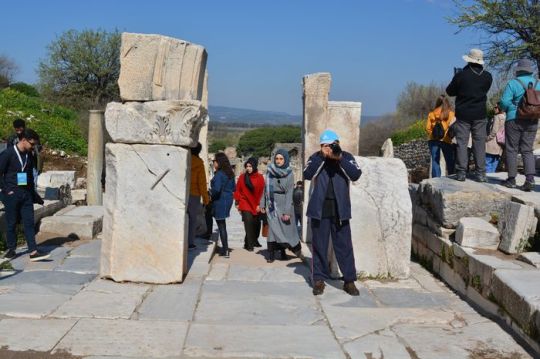
The Story of Bulgarian Rose Oil
Introduction to Rosa Damascena
Rosa Damascena, known for its aromatic oils, holds a special place in Bulgarian culture. Introduced to Bulgarian lands centuries ago, it flourished into a symbol of the nation’s beauty. Nestled amidst the Balkan and Sredna Gora Mountains, the Valley of Roses became its haven, where favorable climate and soil nurtured its growth.
Cultivation and Distillation
Bulgarian growers and distillers have honed their craft over generations, earning the Valley its prestigious reputation as the producer of the finest rose oil in the world. Their expertise has been recognized with numerous accolades from international exhibitions across Paris, London, Philadelphia, Antwerp, Milan, and beyond.
A Fragrant Phenomenon
For centuries, travelers marveled at the vast expanse of rose plantations adorning the valley, captivated by the intoxicating scent of Kazanlak roses. Even today, visitors can experience this marvel during late May and mid-June, when the air is filled with the aroma of oil-yielding roses. In the early hours before dawn, reminiscent of ancient times, rose-pickers carefully select each delicate blossom, which will later journey to distilleries. Each tiny petal contributes to the 3.5 tons of roses needed to produce a single kilogram of rose oil Private Turkey Tours.
The Art of Rose Cultivation
Despite its allure, rose cultivation is a labor-intensive process. The bushes, adorned with thorns, demand meticulous care. From tending to the soil to weeding and harvesting, each step requires precision and dedication. Rose-picking commences at dawn when the dew still lingers, ensuring the highest yield and best quality oil. The blossoms undergo continuous processing to preserve their delicate essence and prevent any damage to the final product.
Preserving Tradition in Modern Times
As the sun rises over the Valley of Roses, the legacy of Bulgarian rose oil continues to thrive. With each harvest, a timeless tradition is upheld, honoring the land, the roses, and the skilled hands that cultivate them. In the delicate petals of Rosa Damascena lies not just a fragrance, but a symbol of Bulgaria’s rich heritage and enduring beauty.
0 notes
Photo
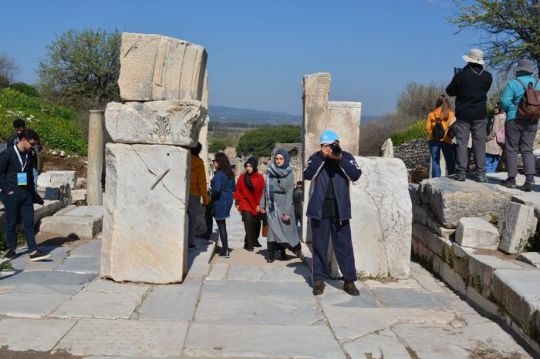
The Story of Bulgarian Rose Oil
Introduction to Rosa Damascena
Rosa Damascena, known for its aromatic oils, holds a special place in Bulgarian culture. Introduced to Bulgarian lands centuries ago, it flourished into a symbol of the nation’s beauty. Nestled amidst the Balkan and Sredna Gora Mountains, the Valley of Roses became its haven, where favorable climate and soil nurtured its growth.
Cultivation and Distillation
Bulgarian growers and distillers have honed their craft over generations, earning the Valley its prestigious reputation as the producer of the finest rose oil in the world. Their expertise has been recognized with numerous accolades from international exhibitions across Paris, London, Philadelphia, Antwerp, Milan, and beyond.
A Fragrant Phenomenon
For centuries, travelers marveled at the vast expanse of rose plantations adorning the valley, captivated by the intoxicating scent of Kazanlak roses. Even today, visitors can experience this marvel during late May and mid-June, when the air is filled with the aroma of oil-yielding roses. In the early hours before dawn, reminiscent of ancient times, rose-pickers carefully select each delicate blossom, which will later journey to distilleries. Each tiny petal contributes to the 3.5 tons of roses needed to produce a single kilogram of rose oil Private Turkey Tours.
The Art of Rose Cultivation
Despite its allure, rose cultivation is a labor-intensive process. The bushes, adorned with thorns, demand meticulous care. From tending to the soil to weeding and harvesting, each step requires precision and dedication. Rose-picking commences at dawn when the dew still lingers, ensuring the highest yield and best quality oil. The blossoms undergo continuous processing to preserve their delicate essence and prevent any damage to the final product.
Preserving Tradition in Modern Times
As the sun rises over the Valley of Roses, the legacy of Bulgarian rose oil continues to thrive. With each harvest, a timeless tradition is upheld, honoring the land, the roses, and the skilled hands that cultivate them. In the delicate petals of Rosa Damascena lies not just a fragrance, but a symbol of Bulgaria’s rich heritage and enduring beauty.
0 notes